The Jersey throughout Time
From the Father of Gymnastics, Friedrich Ludwig Jahn, until Now
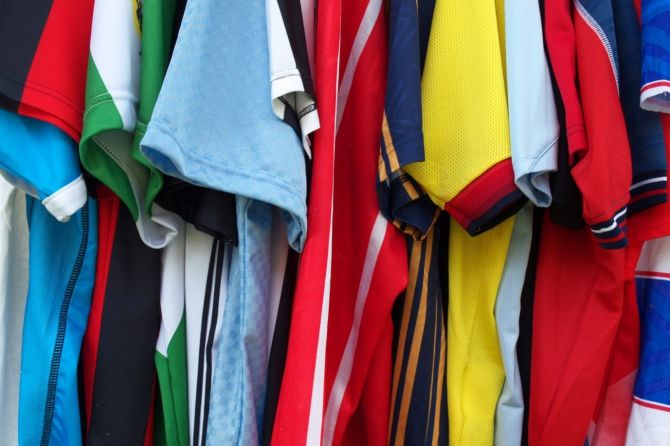
Let’s take a look at the 100+ year history of the sports jersey – from the cotton shirt to modern high-tech sportswear. In the last century, not only the material, but also the design of the jersey has changed drastically.
From Wool to Functional Fabrics: The History of Jersey Materials
Although the ancient Greeks preferred to compete in the Olympics in the nude, modern athletes would rather wear clothing during competition. Sports clothing has changed significantly since the 19th century. Let’s take a quick look at the history of sport, and thus the history of the sports jersey.
Gymnastics Movement of the 19th Century
Modern gymnastics has its roots in 19th century Germany. In 1811, the “Father of Gymnastics”, Friedrich Ludwig Jahn (1778-1852) opened the first open-air gymnasium near Berlin, with the motto “frisch, fromm, fröhlich, frei”, which means “fresh, devout, happy, and free”. Shortly afterwards, gymnastics clubs began to open throughout Germany.
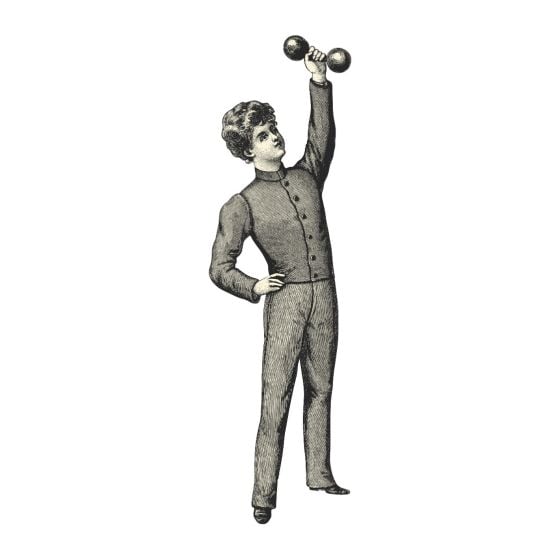
Although the first gymnasts wore uniform gray linen clothing, by the end of the 19th century they had switched to cotton shirts. With the advent of team sports, it was important to be able to differentiate between the players. Therefore, the athlete’s shirts were dyed various colors, and club crests and player numbers were sewn on to the shirts.
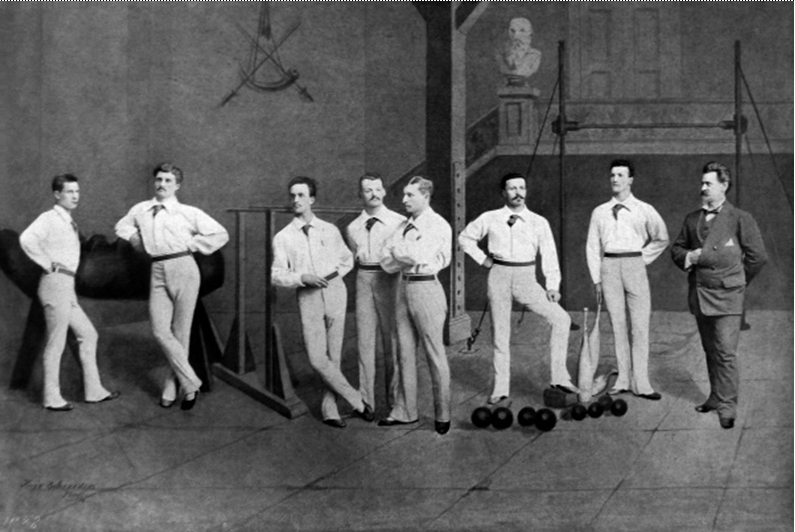
The Summer Olympics and the Development of Sportswear
The reintroduction of the Olympic Games ensured the continued development of specialized clothing for athletes.
The first modern Olympiad took place in Athens in 1896.

Looking at pictures taken in Athens by the German photographer, Albert Meyer, you can see that there were no uniform clothing regulations at the 1896 Olympics. Even athletes from the same nation, such as French cyclists Léon Flameng (right) und Paul Masson did not wear the same uniforms:
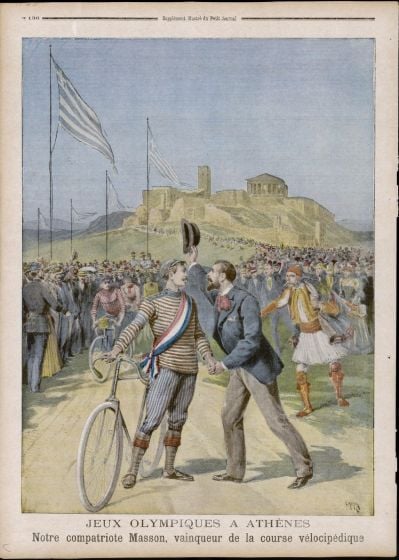
That would soon change: at the London Games in 1908, uniform regulations for all participants were hung in every locker room. The regulations for the marathon were:
“Every competitor shall wear a sleeved jersey and loose drawers to the knees, and any competitor shall be excluded unless properly attired. [...] Every competitor shall be supplied with and wear on back and front during competition a distinctive number corresponding to his number in the program.”
(Source: The Fourth Olympiad, London, 1908, Page 404)
Until after the Second World War, sports jerseys were made mainly of cotton or wool jersey, a soft, stretchy knit fabric. This is where the word “jersey” comes from. (Incidentally, Coco Chanel popularised this textile for outerwear in 1916.)
The Rise of Synthetic Sportswear
The development of synthetic fibers like nylon, polyester and elastane (also called spandex or lycra) revolutionised the textile industry, and thus athletic clothing, from the 1930s to 1960s. Synthetic fibers are ideal for sports jerseys thanks to their tear resistance and elasticity.

All top athletes in the 1970s wore tight-fitting, elastic jerseys made from elastane and polyester. Stretchy, synthetic, shiny fabrics were also very popular outside the world of sports in this time period.
The first jerseys from synthetic fibers were rather uncomfortable to wear. Therefore, textile research over the last four decades has focused on optimising the properties of these textiles for sports wear.
Rather than sewing player numbers on by hand as was done over 100 years ago, today’s jerseys are printed using modern technology. At owayo we rely on a special, patented process, which preserves the elasticity and breathability of the jersey.
Features such as comfort, robustness, and moisture wicking are essential to high-quality sports jerseys today. Therefore, we only use fabrics from well-known European manufacturers.
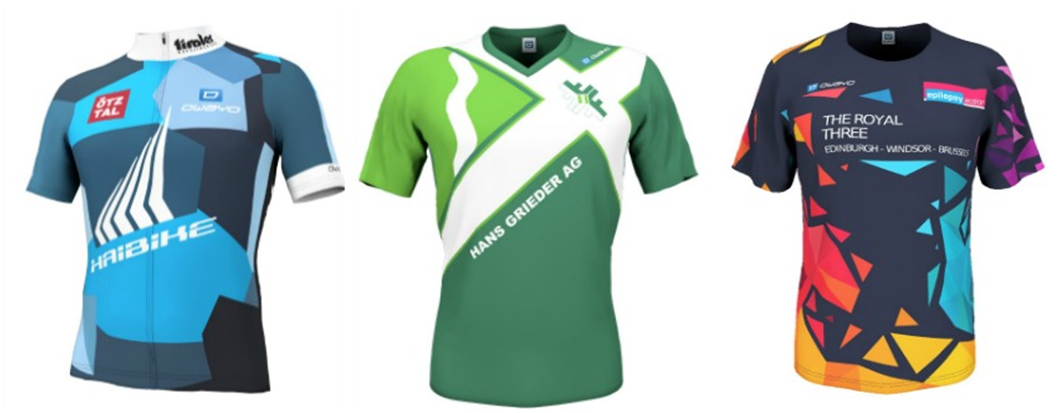
CYCLING JERSEY C5 PRO MEN | FOOTBALL JERSEY F6 HERO | RUNNING JERSEY R5 PRO MEN
Did you know that you can take a look at the quality of our jersey materials in advance? We would be happy to send you informational materials and fabric swatches! Choose your sport and order and informational brochure (under the category “Support”).
We hope that you enjoyed looking back at the history of the jersey, and we hope that you continue to enjoy playing sports!
Images: Cover Image 1: Wikimedia Commons, CCO and owayo; © Wikimedia Commons, CCO; Image 2: © Wikimedia Commons, CCO; Image 3 and 4: © Albert Meyer, Wikimedia Commons (CCO); Image 5: © Official Marine Corps Photo # A411758, Wikimedia Commons (CC0); Image 6: owayo.de; Image 7: © Ludovic Péron, CC BY-SA 3.0, Wikimedia Commons.